So, How Did All Those Games I Kickstarted Turn Out?
Jeremy finds the most interesting thing at PAX East: All the playable demos of games he backed last year.
This article first appeared on USgamer, a partner publication of VG247. Some content, such as this article, has been migrated to VG247 for posterity after USgamer's closure - but it has not been edited or further vetted by the VG247 team.
PAX East is basically the place where all the games we collectively Kickstarted last year have come to reveal themselves, like beautiful retro-graphic butterflies emerging from their long winter's cocoon of crowdfunded uncertainty. We gave people money, now those people deliver proof that, no, they didn't run off to an island somewhere to retire on our donations.
My main goal this weekend is to play every available game I've Kickstarted to see how things are coming along. To be honest, I'm pretty discriminating about what I back, so I didn't expect anything particularly disastrous – but, that being said, I've been pleasantly surprised by the quality of these games' early versions nevertheless.
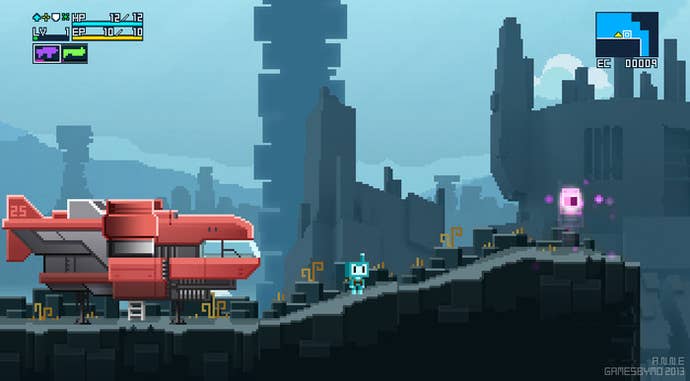
A.N.N.E.
by Gamesbymo
At this point, the thought of a game with retro-style pixel graphics is no longer interesting or charming. By far, the overwhelming majority of the PAX East show floor consists of games designed to look like they were designed circa 1993, thanks in large part to the way the presence of major publishers has evaporated from PAX in favor of an ocean of independent developers. At this point, making your game look like it was originally programmed for Sega Genesis is no longer interesting or clever; to stand out, you need to do something interesting with the game itself.
A.N.N.E. definitely deserves points for trying something interesting despite going the same retro direction as... well, almost all the games on this list. It plays like an agglomeration of half a dozen classic games, a platform shooter that offers the freedom to hop into your fighter craft and fly freely through the air. The dual focus between platformer and shoot-em-up in an open-ended world calls back pretty obviously to cult NES classic Blaster Master and The Guardian Legend – the former in the separation of modality between vehicular and on-foot exploration, the latter in the actual shooting and the way the ship sequences focus heavily on corridors that connect different regions of the world.
Both of A.N.N.E.'s protagonists – a male explorer and a female, whose only material difference boils down to the color of their sprite – can upgrade themselves as they venture forward through a combination of experience points and collectibles. The PAX demo featured lots of artificial obstructions to limit players' movements and keep the experience fairly focused, but even within the demo's confined spaces there was plenty of opportunity to experiment and explore. The heroes can equip different weapon types, including a forward laser and a wide Contra-style spread, which can then be modified to use different beams. The plasma weapon is slow and has a short range, but it homes in powerfully on enemies, while the laser can travel further across the screen and break certain blocks.
The mix-and-match equipment system, open-ended combat design, and hint of Dark Souls (you can return to your fallen corpse after you die to collect the half of your collected loot that you lost upon death) makes for a game that wears its influences on its sleeves while making an effort to go the extra mile.

La-Mulana 2
by NIGORO
If you've played the original La-Mulana, you will not be surprised in the least to learn that my experience with the demo involved falling prey to multiple traps and ultimately dying before completing the demo's objectives. But, at the same time, i had a great time being murdered.
Like the best ruthlessly difficult games, La-Mulana 2 lays down some very simple, very consistent rules, which it then expects you to follow scrupulously. Deviation results in failure. Admittedly, it's not the kind of game that telegraphs its rules in advance. It kind of expects you to screw up (and likely die) before you learn the ropes – something I normally detest in games, but in La-Mulana it feels so fundamental to the experience that I can't find it in myself to be resentful. Even if every time I messed up I could see the game's designer, Takumi Naramura, shaking his head in disappointment out of the corner of my eye.
Heroine Lumisa controls in a very particular and slightly peculiar way, and surviving the dungeons hinges in large part upon coming to terms with the rules affecting her jump, her attacks, the length of her whip, and how high a fall she can endure without being stunned or injured. You also need to learn the rules that affect monster behavior – those Pikachu-looking dudes who shoot at you when they see you can be nasty, but you can always attack them from behind. Or, alternately, you can duck out of the line of fire and let the recoil of their attacks send them hurtling over the edge of a cliff. Just be aware that at some point, you're going to step on a trap that'll send you over the edge of a cliff, too. That's life in La-Mulana.
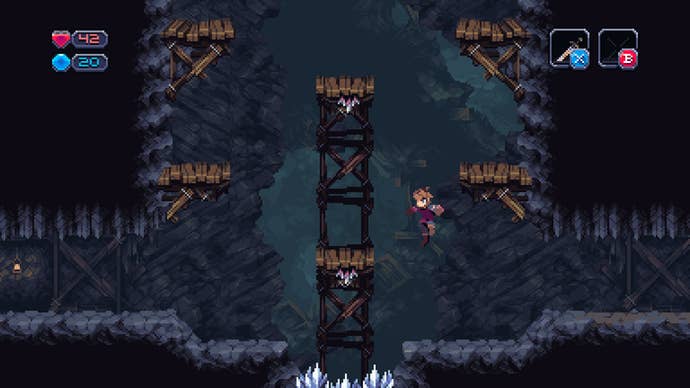
Chasm
by Discord Games
Unlike many of the other retro-influenced games at PAX, Chasm doesn't tread any new ground to speak of. It is, without question, a game in the mold of Castlevania: Symphony of the Night – or, if you prefer, Ys III. You venture into an abandoned mine, encounter an obstruction, delve further into the caves in order to find the solution to that roadblock, procure it, return to the obstruction, and proceed to the next phase of the adventure. Later, rinse, and repeat, one assumes.
While one might hope for a somewhat more adventurous design beneath the game, to Chasm's credit it does what it does extremely well. Controls are tight but not rigid – there's a touch of looseness to keep things feeling limber, but at the same time you can perform top-tier action game jump-attack combos; you need to jump and slash to take out a number of enemies, and Chasm makes those finesse moves a breeze. Maybe that seems something that should be a given in this style of game, but all too often indie developers glance backward and mimic the classic look without properly coming to appreciate the fine details that made the best 8- and 16-bit action titles work. Chasm's creators clearly get it.
In fact, if we take Ys III as the inflection point for Chasm's design, the truth is that Chasm outperforms its predecessor. The subterranean combat can be tricky, with lots of precise platforming – at one point I found myself swinging on a suspended log that worked exactly like the infamous clock tower pendulums in Castlevania III – but I never got the impression that I took damage from enemies for any reason besides "I was playing sloppily." While the PAX demo barely scratches the surface of the game, it's refreshing to play a game that unabashedly embraces the classics while perfectly doing them justice.

Shovel Knight
by Yacht Club
That being said, for fake-retro fidelity, nothing comes close to Shovel Knight. After a marvelously successful Kickstarter campaign, Yacht Club's oddball action game is due out in about a month. And it looks suitably polished.
Shovel Knight takes a bizarre premise (you are a knight wielding a shovel) and runs with it, embracing it wholly and making it work wonderfully. The entire game revolves around its quirky protagonist, and so far as I saw in my demo, the knight never equips himself with anything but a shovel. It's shovels as far as the eye can see.
But wow, what a shovel! This shovel can work like Scrooge McDuck's cane in NES DuckTales, pogoing off enemies. It can smack into foes, too. It can pop open treasure chests. It can whack bombs to send them flying, exploding to open hidden passages. The shovel can break through certain walls (revealing delicious life-restoring roast turkeys in the process). It can stun invincible ghosts. Oh, and also? It can dig.
Shovel Knight maintains a brisk pace thanks to its snappy, shovel-centric action and crisp graphics. Of every game at PAX East with retro-inflected graphics, none looks as genuinely plucked from the NES era as Shovel Knight; aside from the too-wide graphical resolution, it's a perfect simulation of a top-tier Nintendo game. It maintains a constant sense of variety with its visuals despite their limits, being at once faithful and creative. The action feels fast and fluid, with tons of skill-based secrets hidden about. The entire premise is goofy as can be, but Shovel Knight owns its insanity. From what I've seen, it's frankly brilliant.
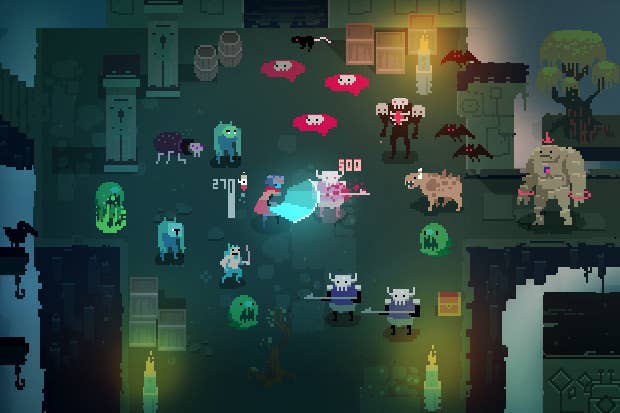
Hyper Light Drifter
by Heart Machines
At the other end of the spectrum, Hyper Light Drifter employs a pixel-style look, but it makes no effort to be authentic to the aesthetics and limitations of the olden days. It's all about cool.
Oh, Drifter nods to the creators' favorites, like the rest of PAX's extensive indie presence. The unmistakable influence at work here is Square's Secret of Mana, from the top-down perspective to the unrepentant lifting of that game's innovative pop-up ring-style menus for selecting weapons and skills. Which isn't to say it plays at all like Mana; Drifter is fast-paced and intense, flooding the screen with enemies and forcing player to stay alert and lithe.
The demo I played at Game Developers Conference last month (which admittedly differed in content from the PAX floor demo) doesn't entirely represent the game I backed on Kickstarter, though. Rather than demonstrating the story-driven single-player mode at the heart of the Drifter experience, Heart Machines instead is letting showgoers try out the cooperative arena mode, in which two players can team up in a raw test of survival. While this variant doesn't necessarily represent the main game – it's strictly wave upon wave of enemies in a big open room – it does highlight the blazing speed of the game action, as well as giving players a chance to try out all the different weapons.
And I do mean different: The game's director told me that the development team has gone to great lengths to ensure each of the eight weapons you collect through the course of the adventure is unique and distinct. While most of them are more or less standard fare – a grenade, a shotgun, etc. – others are bizarre and will definitely take some getting used to, like the strange gun that causes a giant slab of rock to drop suddenly onto foes. With its varied tactical choices and fluid high-speed action, Hyper Light Drifter is really fun, even in its limited demo form. I can't wait to see how this great game engine translates into a full adventure.
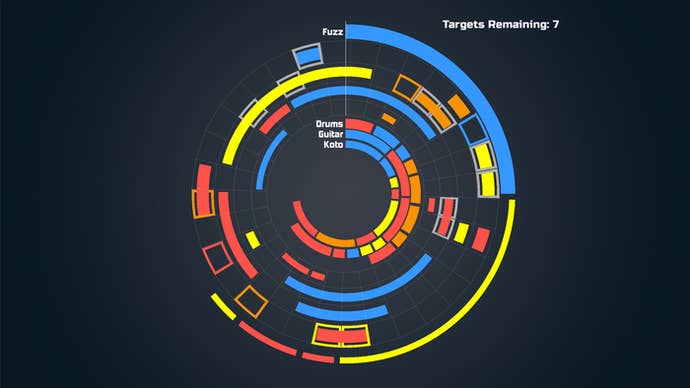
Sentris
by Samantha Kalman
And finally, the most unique (and decidedly different) of my Kickstarter selections, Sentris strains the definition of "game." Players use a total of five buttons to play, and the game completely lacks a fail state. Playing amounts to switching between concentric music tracks and slotting notes into a queue, completing pieces in an almost totally free form style. There is no right or wrong solution to any level, save for what the evidence of your ears tell you; whether you slap together a shrill cacophony of noise or lay down a sleek melody, Sentris doesn't judge. It asks you only to create.
The sole title of my PAX Kickstarter selections not to feature a pixel art look (what can I say, I have a type), Sentris instead goes almost totally abstract, using a blocky, geometric visual style that perfectly complements its sharp, electronic audio. Lacking challenge of any kind or even concrete goals beyond "finish filling in this track of music," Sentris seems like a welcome antidote to the twitchy, challenging, structured design of all the other projects I've helped back lately. A mellow groove to help unwind.
So, in summary
For all the hand-wringing we see about broken Kickstarter promises and failed projects, these six titles are all shaping up to be everything that I hoped, and in some cases even better than that. Maybe I've just been lucky, but my visit to the Indie Megabooth filled me with optimism. Of course, the downside to that is that I'll probably end up spending even more money on Kickstarter now....
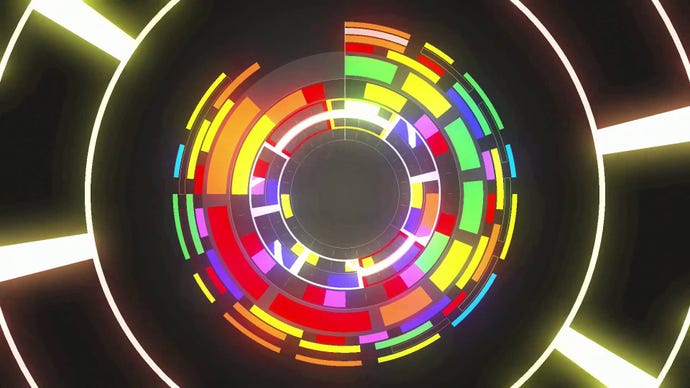






.jpg?width=291&height=164&fit=crop&quality=80&format=jpg&auto=webp)
